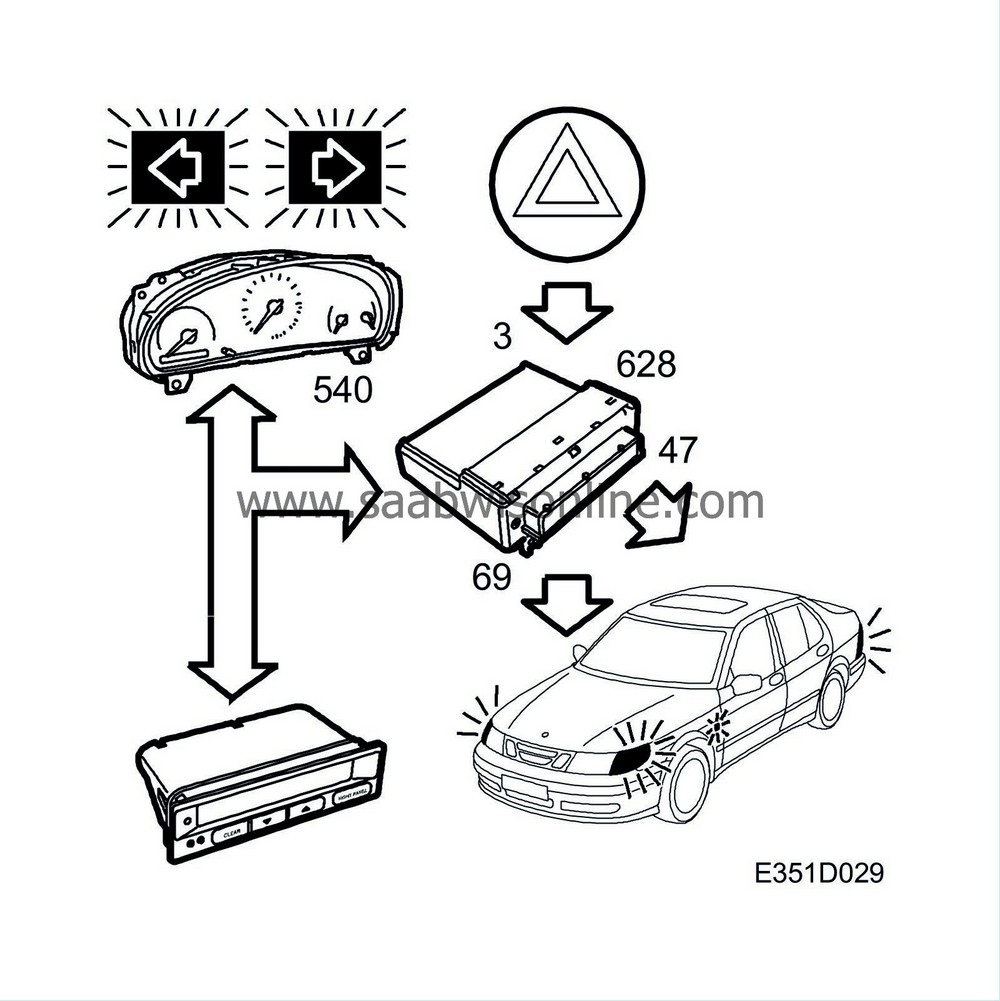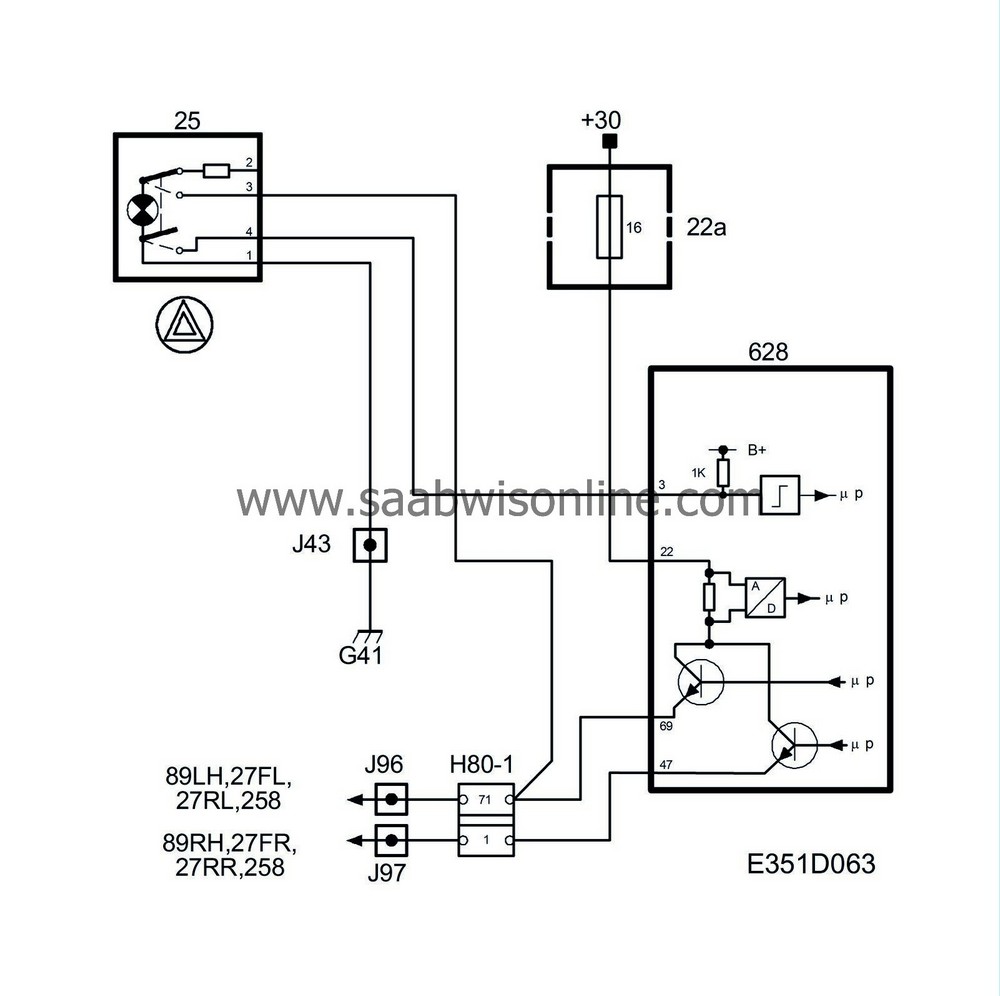PRE-RELEASE
Hazard warning lights
| Hazard warning lights |
The hazard warning lights are activated by the hazard warning light switch on the instrument panel regardless of the ignition switch position. Voltage is supplied to the direction indicators via DICE.

The control module then delivers voltage pulses to the indicator lamp in question from:
| • |
pin 69 for LH direction indicators
|
|
| • |
pin 47 for RH direction indicators
|
|
The indicator lamp (25) for the hazard warning light switch is, in the inactive position, supplied with voltage from pin 49 of the control module and is then dimly illuminated.
When the hazard warning lights are activated, the indicator lamp is supplied with the same voltage pulses as the left-hand direction indicators and then blinks with full light intensity.
DICE monitors the direction-indicator circuit internally. The control module does this by measuring current and voltage across a resistor located in the control module on pin 22. If the voltage/current ratio undergoes a change, DICE responds. In the case of high load, the control module shuts off the output. If the load is low, the flash frequency is increased.
The flash frequency is normally 90±5 per minute. In the case of low load, i.e. if a low-rated bulb has been fitted or the bulb is defective, the flash frequency will double.
Power to direction-indicator lamps on a trailer, if any, is fed via the connector 258.
The hazard warning lights can be activated by TWICE when an alarm is initiated. Twice transmits the hazard warning light status (ON/OFF) on the bus.
Activation of the hazard warning lights is indicated by the blinking of the respective control lamps on MIU (540) when the direction indicator status information (ON/OFF) is received from the bus.
Active indicators are also indicated by a "tick-tock" sound, which is generated in the SID unit in response to information from the bus.
If there is no voltage on the control module pin 22, no information is sent to the bus.
The pulse ratio of the hazard warning lights is normally 50%. The pulse ratio sinks when the battery voltage is either high or low. In the event of a high voltage the object is to limit any rise of temperature in DICE and with low voltage to minimize the demands on the battery. The lowest value to which the ratio sinks is 30%.



